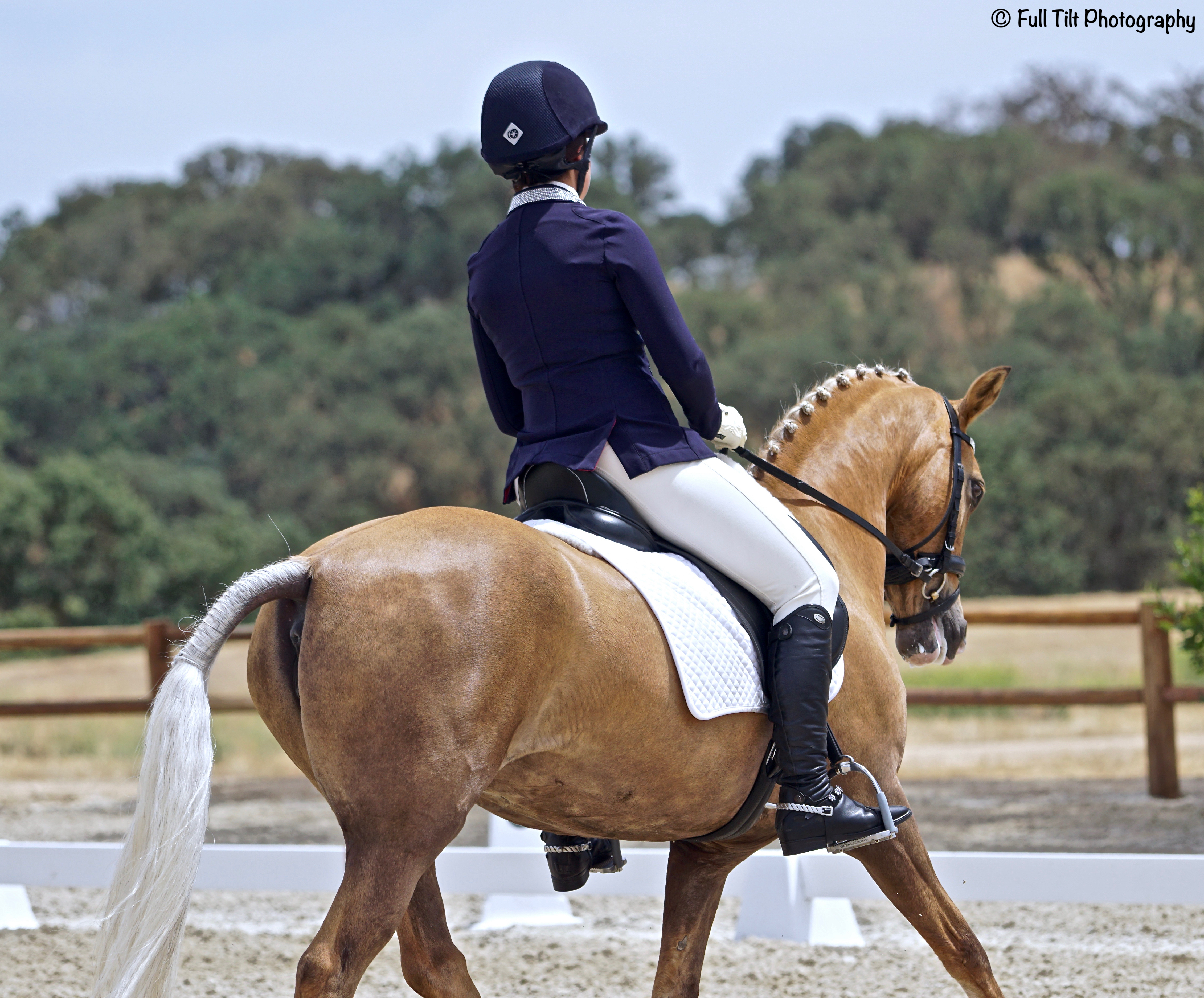Search the Site
Guest Blog # 111: "Weighty Matters" by Bill Woods

When people speak of weight aids, they are referring to something that your seat does, but don’t think of your "seat" as just those two little protuberances on the bottom of your pelvis. I prefer to think of my seat as beginning somewhere in the back of my neck (my withers) and going nearly to my knees.
For the most part the use of your weight (your seat) is not placing dead weight somewhere. Rather it’s a dynamic displacement which goes rhythmically with (or occasionally intentionally counter to) the motion of your horse.
When first learning to ride, your job is to sit in a non-interfering way which goes entirely with the horse’s movement. At some point, however, as your own coordination and your horse’s training develops, he will learn to adjust to changes you make in your motion and begin to follow you. The combination of abs, lower back, and thighs (supported by your driving legs when necessary) will regulate the tempo and direction your body language dictates. It may even momentarily interrupt it.
One thing to remember is that responding to your weight is a learned response. Through second order conditioning (using your leg and weight together) your horse will learn what your weight aid means. Consequently, if you don’t get the response you want, go back to the primary aid, reinforce it, and try the combination again. A classic example is a rider who wants her horse to go forward. In the best world pulling your pelvis forward with your abdominal muscles should elicit that response. If it doesn’t, the last thing you want to do is that rapid series of back to front grinding you see beginners do with their hips. It’s about as effective as waving the reins around and shouting giddyup!
Here is a more subtle example with a similar message. Imagine you are leg yielding. Often a horse will respond if you take your hips in the direction you wish to go. But if he doesn’t come along, it does no good to further exaggerate that weight shift. Then you have to "reload," put your weight back to the opposite side and a little behind him, and send him sideways with your leg. As he responds you can shift your weight back in the original direction and go along with him, even slightly leading him.
On the topic of weight, it’s also good to remember that at times a quiet seat or a lighter than normal seat (where you take a little weight off your seat bones and support yourself more on your thighs) is a useful option. Less really is more at times, and if your horse is carrying himself forward, there’s no reason to be pushing him.






